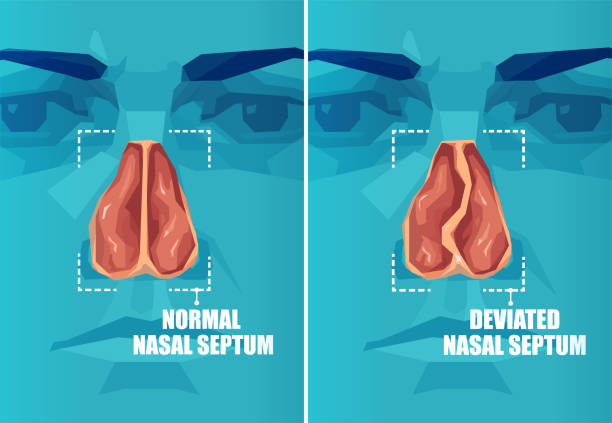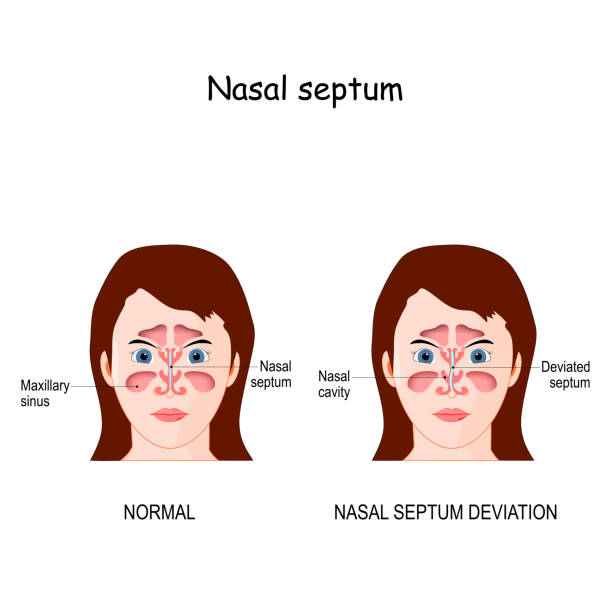Deviated septum is a condition where the septum, the wall between the two nostrils, is displaced from its normal midline position. This can cause a variety of symptoms, including nasal congestion, difficulty breathing through one or both nostrils, frequent nosebleeds, and frequent sinus infections.
Other surgical options include a submucous resection, in which the septum is trimmed and reshaped, or a more extensive procedure called a rhinoplasty, which involves reshaping the entire nose for cosmetic purposes and to correct the deviated septum.
Symptoms of Deviated Septum
The most common symptoms of deviated septum include:
Nasal congestion or blockage: One side of the nose may appear significantly more congested than the other, making it difficult to breathe.
Breathing difficulties: People with a deviated septum may experience breathing difficulties, especially during exercise or physical activity.
Frequent nosebleeds: Deviated septums can make the nasal membranes more fragile and susceptible to injury, leading to frequent nosebleeds.
Sinus infections: Deviated septums can lead to a buildup of mucus in the sinuses, which can increase the risk of sinus infections.
Snoring: People with deviated septums may snore loudly, particularly if their breathing is obstructed during sleep.
Dry mouth and throat: People with deviated septums may experience dry mouth and throat, as they may breathe through their mouth while sleeping.
Treatment for a Deviated Septum
The treatment for a deviated septum depends on the severity of the symptoms and the degree of nasal obstruction.
Non-surgical treatments
Non-surgical treatments such as decongestants, saline nasal sprays, and antihistamines may be helpful for mild symptoms. In more severe cases, surgical intervention may be necessary. The most common surgical procedure for a deviated septum is septoplasty, where the nasal septum is straightened and repositioned to improve breathing.
Surgery
In more severe cases, surgery may be necessary. The most common surgical procedure used to treat a deviated septum is septoplasty. During this procedure, the doctor will straighten the septum and remove any obstructions, helping to improve breathing and reduce symptoms.
In some cases, septoplasty may be combined with another procedure, such as a rhinoplasty, which involves reshaping the nose. The combination of these two procedures can be used to improve both the appearance and function of the nose.
Conclusion
Deviated septum is a common condition that can cause a variety of symptoms, including nasal congestion, difficulty breathing, frequent nosebleeds, and frequent sinus infections. Treatment for deviated septum depends on the severity of the condition and the symptoms experienced by the patient, and may range from lifestyle changes to surgical procedures. If you suspect you may have a deviated septum, it is important to see a doctor for a proper diagnosis and treatment plan.

 Home
Home Health
Health Diet & Nutrition
Diet & Nutrition Living Well
Living Well More
More












